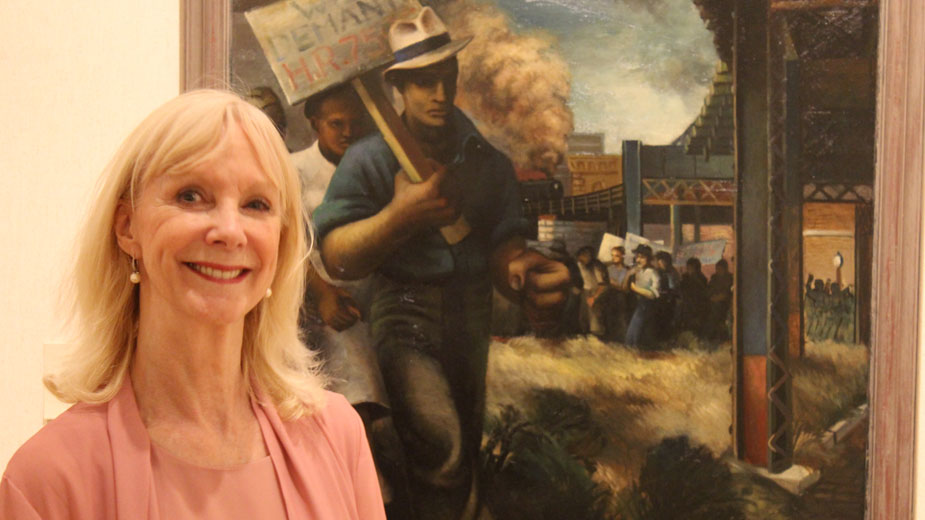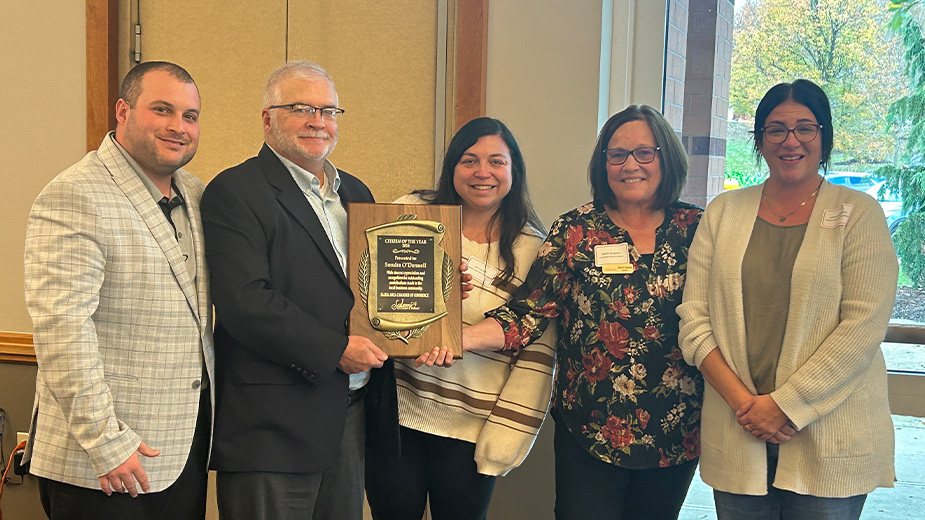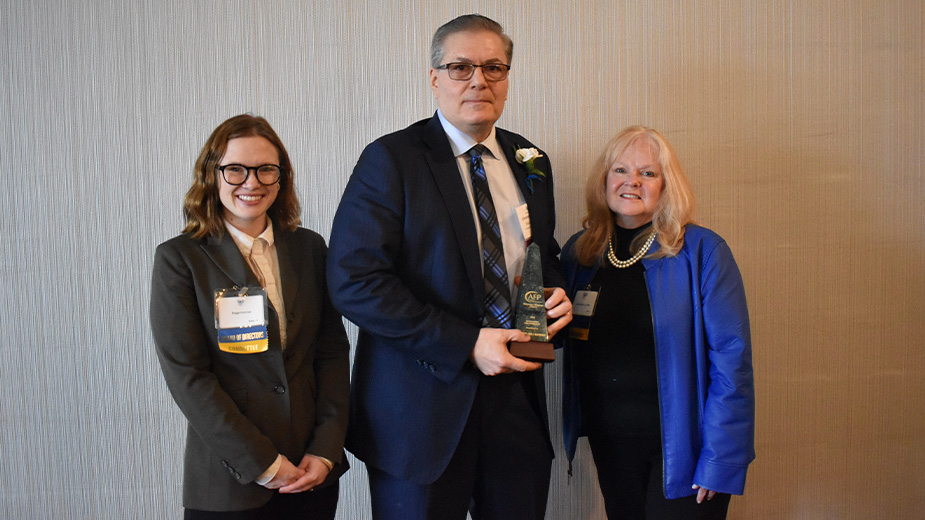Mexican Muralists’ Impact on American Art on Display at Butler
YOUNGSTOWN, Ohio – In a studio in New York City, an artist – one of the most influential on American art in the 20th century – is experimenting with new methods of painting. With a canvas tacked to the floor, he flings paint across it. He punches holes in a can and walks across the canvas as paint drips out. The end result is a 15-foot image, splashed with color in abstract representations of the world around its creator.
It’s 1936 and Jackson Pollock is watching him do it. Four years earlier, David Alfaro Sequeiros first traveled to the United States and almost immediately began changing what it meant to be an artist in the midst of the Great Depression, attracting artists like Pollock to his inner circle.
“One of the tenants of this workshop was that to be revolutionary, art had to be technically revolutionary and the innovations of modern industry had to be transferred to the art-making practice,” said Barbara Haskell, curator of the Whitney Museum of American Art.
In a lecture at The Butler Institute of American Art Wednesday night, Haskell explained the connection and influence Sequeiros and two of his Mexican contemporaries – Diego Rivera and Jose Clemente Orozco – had on American art in the first half of the 20th century.
“One of the notions that Mexican artists represented was the idea that art is a weapon for social change and social betterment,” Haskell said. “Siqueiros talked about art as an ideological work of the people. It was a time when the stock market crashed and people were really questioning laissez-faire capitalism.”
The prevailing wisdom in the American art field has long been that French painters like Picasso and Matisse were the ones who spurred a new generation of American artists and styles. But as a cultural exchange between the United States and Mexico sprung up around 1925, it was that influence that had a greater impact on the content of the works as the Mexican muralists spread ideas on technique, style and content that would set the stage for a century of American art.
“There was the idea that art should speak to the public about things that are relevant to every-day lives, that art has a social role that had been lost in ‘art for art’s sake’ ethos of French modernism,” Haskell said. “It returned art to the community as a communicative educational vehicle.”
What brought the trio to the United States, said the Butler’s executive director, Lou Zona, was the Works Progress Administration, created not long after Rivera completed his “Detroit Industry” murals at the Detroit Institute of Art, funded largely by Edsel Ford.
“Among the things they asked them to do was to paint murals. American artists soon learned that the greatest mural artists were Mexicans,” Zona said. “Before you know it, there were artists like Diego Rivera and Siqueiros coming to America to show artists what it’s really all about and the tricks of the trade.”
Common throughout the works of Siqueiros, Rivera and Orozco were representations of commoners and social injustices, whether it be racism, imperialism or labor conflicts. All three artists lived in Mexico during the revolution that installed a communist government, though their involvement in the party varied greatly, from the Joseph Stalin-aligned Sequeiros to the virtually-apolitical Orozco.
“They had depicted the revolution, depicted the people and their lives. Americans turned to them as models” in a time of social upheaval, she said. “What they did that hadn’t been done in America up to that time was they combined figurative imagery with very expressive paint technique. They projected content that was relevant but in a style that was both modern and native.”
Those works, along with the artists they influenced, will be the subject of an exhibit at the Whitney in New York City next spring. Side-by-side in slides during Haskell’s presentation, the comparisons between Siqueiros and Pollock or Orozco and Thomas Hart Benton are clearly apt. In both the works of Mexican artists and the Americans they inspired, bodies share the same squat stature with round faces reminiscent of ancient Olmec statues. Works depicting the Mexican Revolution depict striking similarities with picketing workers in the United States.
Two of the works in the Butler’s permanent collection – Joe Jones’ “We Demand” and William Gropper’s “Youngstown Strike” – will be part of the exhibit.
“Both of them were very involved with Mexican muralists. They showed at the same radical clubs in New York. They participated in the same exhibitions,” Haskell said. “Their idea was that art was needed to point out the abuses of industry, that policeman were killing Americans who were striking for union representation. Those two artists in particular were very involved in the struggle to bring awareness to what was happening with employment exploitation.”
“Youngstown Strike” depicts a strike at Youngstown Sheet & Tube Co. in 1916, though it’s likely that he was inspired by a similar event at a Republic Steel site in Chicago in 1937, the year he created the work.
“Fifty people died, 100 people were shot. It was a common story in the 1930s, these steel companies trying to block the unionization of workers,” Haskell explained. “There was police brutality against innocent people, women, children. … There’s so much talk of it in the news now, but in the ‘30s it was in the papers all the time. These artists were motivated to make work that didn’t sell in order to provoke action and bring about a better future.”
Haskell’s lecture is the first of the “On America” series, held at the museum throughout the summer in celebration of its centennial. Other scheduled speakers include William Underwood, director of the Georgia Museum of Art; Sarah Kelly-Oehler, curator at the Art Institute of Chicago; and Eric Widing, deputy chairman of Christie’s American Art. Each topic will touch on a facet of American art, from the works of African-American artists to a behind-the-scenes look at art auctions.
“It adds prestige to the Butler when you can bring in this level of expertise to talk about our collection and other works of art,” Zona said.
Pictured: Barbara Haskell, curator at the Whitney Museum of American Art, was the featured speaker at The Butler Institute of American Art’s “On America” lecture. Joe Jones’ “We Demand” – part of the Butler’s permanent collection – will be loaned to the Whitney for an exhibit on the impact of Mexican muralists on American art.
Copyright 2024 The Business Journal, Youngstown, Ohio.



